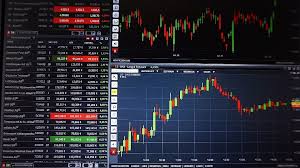- by 横川光恵
- 2025年11月7日
Understanding Pips What They Are and Their Importance in Trading 1865013844

Understanding Pips in Trading: Definition and Importance
A pip, short for “percentage in point,” is a crucial concept in the forex trading world that represents the smallest price move that a given exchange rate can make based on market convention. In the financial markets, particularly in forex (foreign exchange) trading, a pip is widely used to measure price movements and analyze currency pairs. To fully understand what a pip is, its significance, and how it influences trading strategies, it’s essential to delve deeper into its definition and application in trading contexts. For more insights on trading concepts, check out what is a pip in forex trading Trading Connexion.
Defining a Pip
The concept of a pip varies slightly depending on the market being discussed. In forex trading, a pip is typically defined as the fourth decimal place for most currency pairs. For example, if the EUR/USD exchange rate moves from 1.1050 to 1.1051, that movement is equal to one pip. However, for currency pairs that involve the Japanese yen, a pip is measured in the second decimal place. Hence, if the USD/JPY moves from 110.00 to 110.01, that’s also one pip.
How Pips are Used in Trading
Pips are vital for measuring price changes in the forex market and calculating potential profits or losses from trades. When placing a trade, traders often specify their target in pips. For example, if a trader believes that the EUR/USD pair will rise, they may place a buy order with a target set at 20 pips above the entry price. This helps in setting stop-loss and take-profit levels, making pips an essential part of a trader’s strategy.
Pip Value and Currency Trading
The value of a pip can vary significantly depending on the currency pair being traded and the size of the trade (lot size). Understanding pip value is crucial for risk management. Traders commonly use standard lots, mini lots, and micro lots that equate to 100,000 units, 10,000 units, and 1,000 units of the base currency, respectively.
For instance, consider a standard lot of 100,000 units for the EUR/USD pair. A pip in this context is typically worth $10 since a movement of one pip (0.0001) in the EUR/USD will translate into a dollar value of 100,000 * 0.0001 = $10. Similarly, for a mini lot, the pip value equates to $1, and for a micro lot, it is $0.10.
Pip Calculations
Calculating pips can help traders determine potential gains or losses. To calculate the pip value, use the following formula:

- Pip Value = (Lot Size * 0.0001) / Exchange Rate
This formula will give traders a clear insight into how much they stand to gain or lose with each pip movement. Accurate calculations allow traders to assess their risk and adjust their strategies accordingly.
Importance of Pips in Risk Management
Pips play a significant role in risk management in trading. By understanding the value of pips, traders can better assess their potential risks and rewards through position sizing. For example, if a trader sets a stop-loss order that is 50 pips away from their entry point, they can calculate how much they are willing to risk based on their account balance. This helps in maintaining disciplined trading practices and prevents emotional decision-making.
Using Pips to Set Trading Strategies
Incorporating pips into trading strategies is a common practice among forex traders. Various strategies can be employed depending on how traders interpret pip movements:
- Scalping: Scalpers aim to make small profits from tiny price changes, typically relying on pips as a measure of success. They often make dozens or even hundreds of trades each day, accumulating small gains that can add up.
- Day Trading: Day traders usually look for trades that can yield a substantial number of pips within a single day, capitalizing on intra-day price movements.
- Swing Trading: Swing traders may hold positions for several days to capture larger price movements, with pip values guiding their decisions on when to enter and exit trades.
Pips vs. Points
While pips are commonly referenced in currency trading, the term “points” is frequently used in stock and commodity trading. A point typically refers to a one-unit movement in the price of an asset. In contrast, a pip represents a fractional change, particularly in forex. Understanding these differences is vital for traders who operate in multiple financial markets.
Conclusion
Pips are an integral part of forex trading, serving as a standard unit of measurement for price movements and a fundamental component in trading strategies and risk management. By comprehensively understanding what a pip is and how to utilize it effectively, traders can enhance their trading skills, make informed decisions, and optimize their profit potential in the ever-evolving landscape of the forex market.